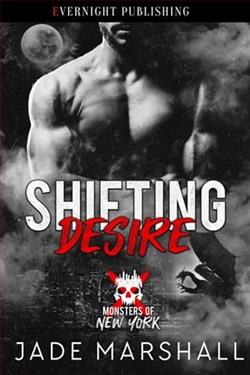Page 25 of The Midnight Lock (Lincoln Rhyme 14)
The intercom system between sterile and non was good. It sounded as if Mel Cooper were right next to them.
Sachs wrote the findings on the whiteboard, below her notation about the absence of latents at the scene, and the fact he’d stolen a pair of her panties and a kitchen knife. A Chef’s Choice model, ten inch.
Cooper continued, “Everything he touched, negative on prints and DNA. He was in gloves. The cookie was half eaten, but he broke it in half before indulging—there was no saliva. This guy is good.”
More than a decade ago a brilliant French criminalist, Edmond Locard, wrote, as Rhyme paraphrased in his classes: “At every crime scene there is a transfer of trace between the criminal and the victim or the scene itself. This evidence might be invisible to the naked eye, undetectable by scent. But it’s there for the crime scene officer with the diligence and patience to find it.”
Locard referred to the trace as “dust” but that was as good a metaphor as any.
Most perps committing serious crimes nowadays wore face masks, shower caps and shirts with long sleeves tucked into their latex or nitrile gloves, keeping the trace evidence they’d brought with them—hairs and skin cells bearing that wonderful and damning deoxyribonucleic acid—from sloughing off at the scene. This was not that they were foundationally cleverer than in the past, or had stumbled across a website devoted to Locard, but because they could be counted on to have a cable TV subscription and an interest in police procedurals.
But the Locksmith was particularly cautious.
Rhyme thought yet again of the Watchmaker and the care he similarly took on his dark assignments.
“Shoe. Size eleven.”
That would make it more likely than not that he was of average height, though he could be obese or skeletal. All investigators were, of course, aware that shoes and feet correspond only if the wearer wishes them to. Rhyme once pursued a killer who left size 12 shoe prints, while his feet came in at 8. There’d been cases where it worked the other way as well, such as when a male killer crammed his size 11 feet into a woman’s size 6 flat. The smart, though undoubtedly painful ploy, confounded the investigation for several days.
“Pattern says it’s a running shoe. But it’s not in the database. So, no brand or model number. Four different types of dirt in the treads: one primarily sand, two basic dirt—minerals and loam—and the last is mostly clay. I’m checking on other substances now.”
Up went the information on the chart.
Sachs added, “I followed his route, service door to basement, elevator, her apartment and back again.”
“Video in the elevator, hallways?”
“No.”
“He’d’ve checked that out ahead of time.”
Cooper said, “Even without a camera, he was taking a chance on the elevator. Somebody else could’ve gotten in at any time. New York, city of night owls.”
“Not if he had an FDNY fire service key,” Rhyme said. “Call Benny back.”
14
Benny,” Rhyme said, “you’re on speaker here. We were wondering about an FDNY key.”
“She was in a high-rise, and he didn’t want to risk another passenger getting on, on the way up or the way down,” Morgenstern said.
“Exactly. Could he’ve picked the fire service lock?”
“This guy could have, piece of cake. But he wouldn’t need to. You can buy sets for a hundred bucks.”
“Assuming there’s no way to trace purchases?”
“Dozens of sellers. Take days. And anyway, since he doesn’t want a trail, he probably got a set at one of those lock-picking conventions I was telling you about. And then, I don’t know her building’s setup, but a lot of them keep a key in a case near the elevator doors on the ground floor or basement. Of course, if you use one and you’re not fire service, you’re in trouble, but I don’t think your perp gives a shit.”
Sachs thanked Benny once more and they disconnected.
“Wonder if heisFDNY,” Cooper said.
Sachs offered, “I don’t see the Locksmith in that culture. Usually fire workers have family. They have friends. Our perp’s a loner. Besides, if they want to get through a door, they don’t pick locks. They use an axe.”
Rhyme agreed it wasn’t a likely theory.
Sachs was staring at the evidence chart. A whisper: “What do you want? Why’re you doing this?”















